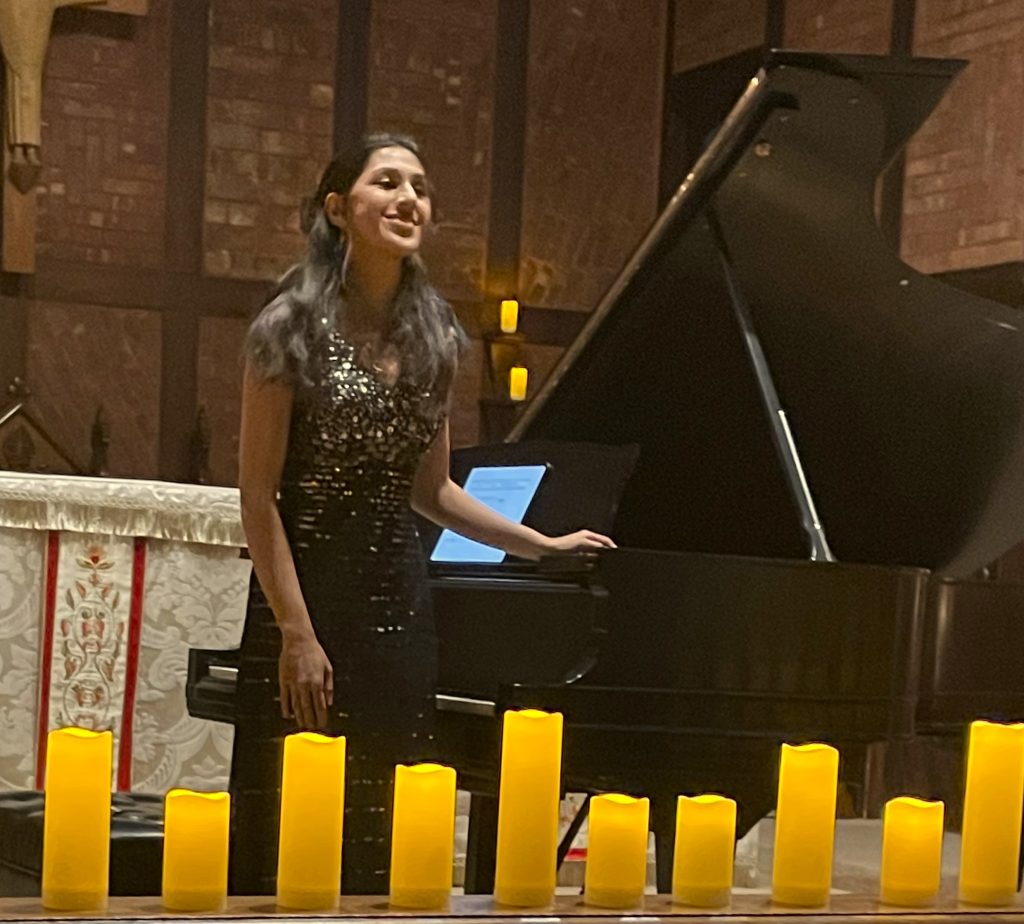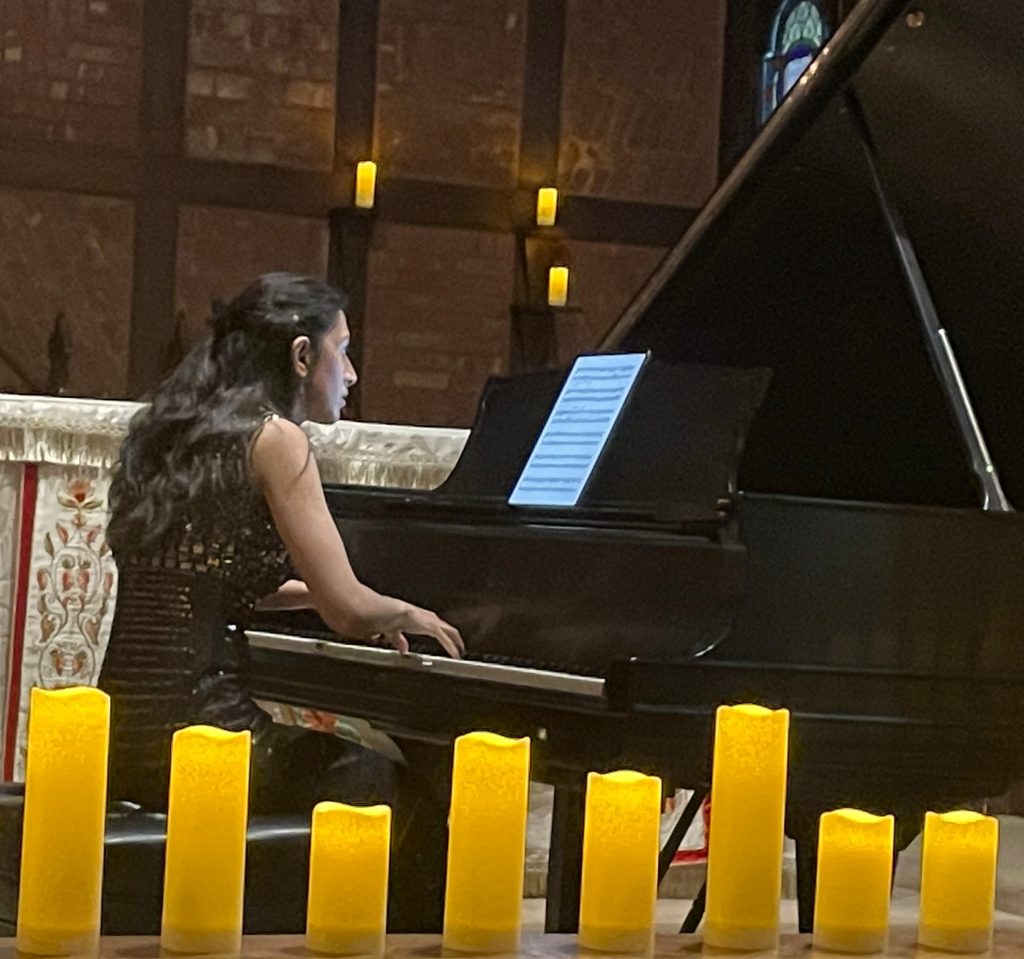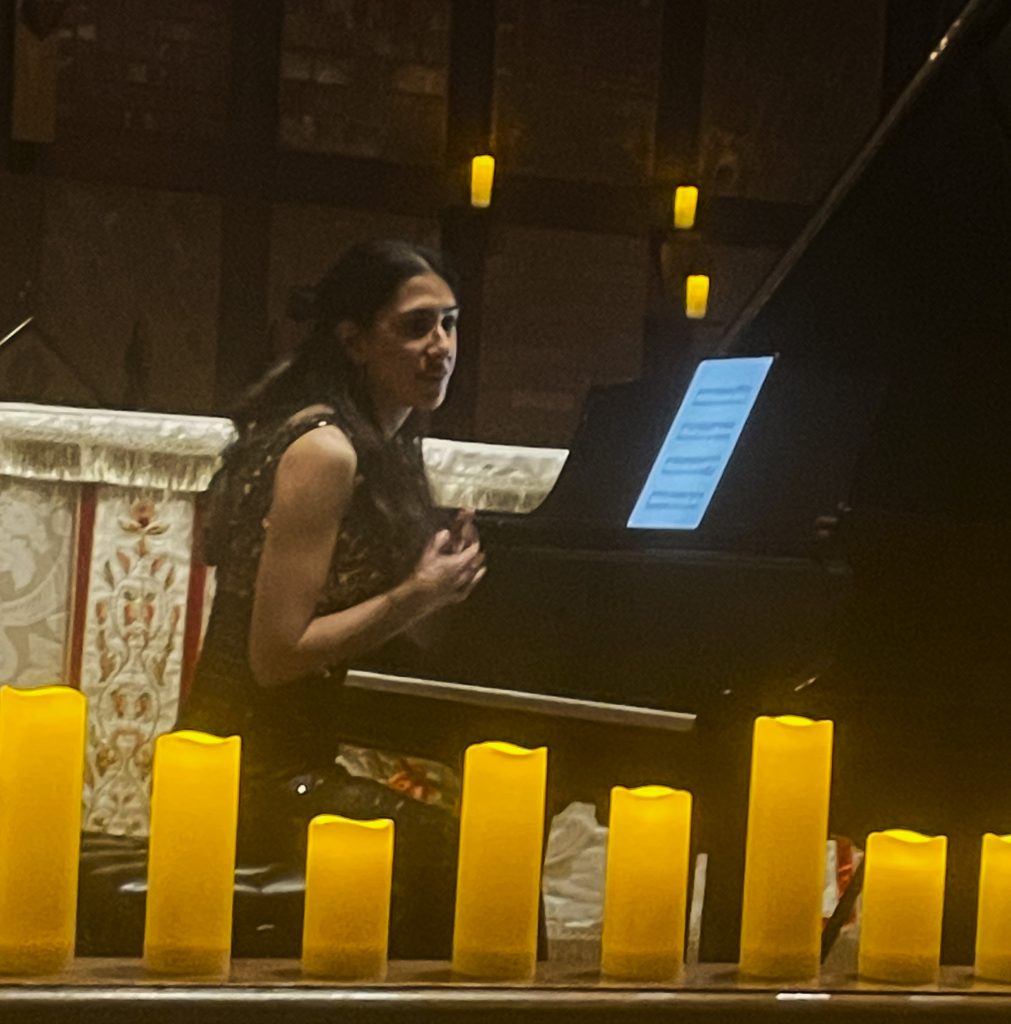
After receiving enthusiastic reviews on her tour of England, Momen is currently touring the U.S. Sophia Zhou, the Artistic Director of the Millbrook Music Salon, introduced Momen. With long, graceful arms and thin fingers, her keyboard work flourishes crisply and clearly.
She opened with a piece by William Byrd (1540-1623): Plainsong: Clarifica me, Pater I, II, III, an example of Anglican church music from the 16th century. Plainsong has a deep church history dating back to the early days of Christianity. Plainsong does not employ a regular meter, and it features a different notational system. This work was processional, meditative, and atmospheric. Byrd was the chief state composer under Elizabeth I. We were invited to eavesdrop on a lost era. She also played Pavana Lachrymae, which was based upon a song by John Dowland (1563-1626) that eschewed the folksier rhythms of dance. Dowland’s musical output was prodigious, and he wrote many songs.
Walsingham: 30 Variations by John Bull (1562-1628) offered an example of England’s greatest virginal keyboard performer, who excelled in eccentricity, seduction, and scandal, eventually being forced to flee to Flanders. This was a fabulous, eccentric run of the keyboard.

Alman: The King’s Jewels by Orlando Gibbons (1583-1625), a transitional figure from Renaissance to Baroque, played for King James I at the Westminster organ. The pianist Glenn Gould created a revival of his work. Here we were treated to such rapid fingering that I felt dizzy.
Shifting from the English Renaissance, Momen performed Shadowlines (2011) by Sir George Benjamin (b. 1960).These six canonic Preludes offered a rush of counterpoint with a hint of paradox, leaving one with the sensation of beginning but not ending.
Ut, re, mi, fa, sol, la, a 4 by Jan Pieterszoon Sweelinck (1562-1621) from Amsterdam was a most astonishing work. It sounded as if he invented Dada centuries before Dadaism was invented. I could not believe what I was hearing, as I was exulting in this extraordinary work of counterpoint that was centuries old. He was the first to write an organ fugue, layering with subtlety. This was perhaps the most mysterious composition that I have ever heard, and it is still ringing in my head!
In Darkness Let Me Dwell, one of John Dowland’s most famous tunes of pathos, was superbly evoked with keyboard poignancy. The lyrics are:
In darkness let me dwell; the ground shall sorrow be,
The roof despair, to bar all cheerful light from me;
The walls of marble black, that moistened still shall weep;
My music, hellish jarring sounds, to banish friendly sleep.
Thus, wedded to my woes, and bedded in my tomb,
Oh, let me dying, live, till death doth come, till death doth come.
Darkness Visible by Thomas Adès (b. 1971) was a most impressive closer; he is much lauded in England as a composer and conductor with nineteen CDs available. Loosely based on the mood of Dowland’s lyrics, the work does not employ Dowland’s notes; this larger meditation with hellish and jarring sounds was inspired by Dowland’s composition. The composition is recorded on Adès 2020 Piano Solos. This transcendent composition needs to be played often in this country. Overall, her playing brought forth a rare ethereal sound from the keyboard.
